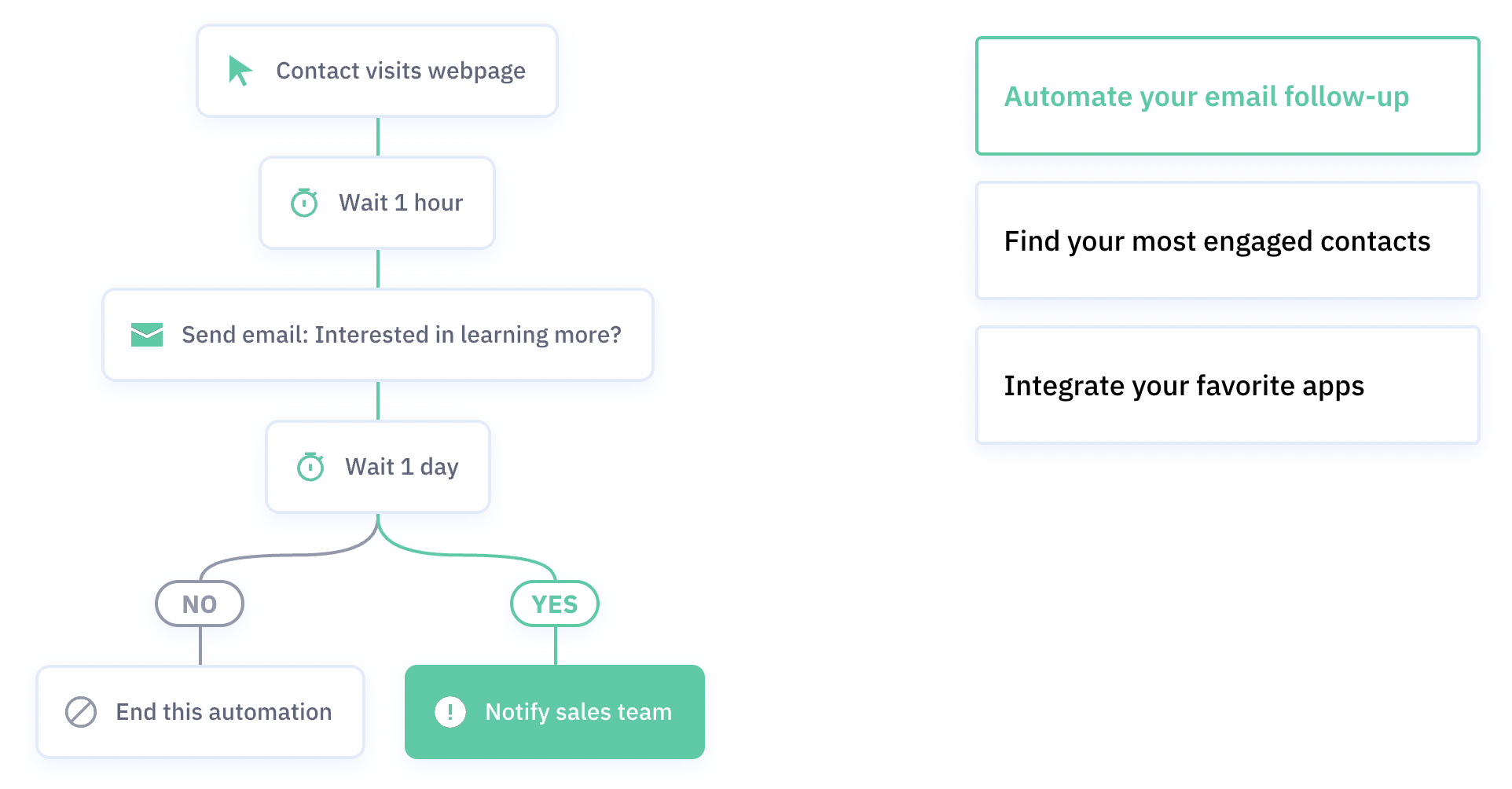
updated 6/20/2022 ⎮ 35 min read ⎮ Lead Generation
We've all been through it. You've set up a website for your small business and it generates you close to no leads and customers. You need lead generation help. Generating high-quality leads consistently is one of the main objectives of any business. In this blog post, you’ll learn everything you need to know about building a lead generation website.
If you just can't figure out why you’re not getting any sales and are clueless about what to optimize, you’ve come to the right place. You’ll see lead generation explained, see examples of lead generation, get recommendations for tools for lead generation, and get a step-by-step guide on how to build a lead generation website for your small business.
Building a lead generation website is not rocket science. When you build a lead generation website, it does the job for you on autopilot. Yes, lead generation without cold calling is possible. Continue reading to learn all the digital marketing tactics, tips, and tricks to turn your website into a lead generation machine for your small business. You can build lead generation websites.
What Is A Lead Generation Website?
A lead generation website is different to a website that is designed purely to inform the audience. The purpose of a lead generation website is to turn a web user to a lead and to maximize the chances of securing that person as a customer going forward.
Lead generation websites oftentimes help website visitors with valuable content, and give them the option to opt-in to learn more while gathering contact information about them. A lead generation website is more than a digital brochure, it's an experience that educates and nurtures prospects.
What Is Lead Generation? - Lead Generation Meaning & Lead Generation Definition
What’s lead generation and what does lead generation do? If you wonder what lead generation means, here is the answer:
Lead generation is the process of cultivating an interest in your business to build an ongoing list of potential customers.
A lead is a potential customer, meaning a person whose interests, preferences and needs match with what your small business offers. Lead generation focuses on attracting and converting leads by capturing their contact information, so you can market and sell to them.
There are various lead generation strategies for small businesses that you can leverage. In this post, we’ll discuss lead generation using your website.
How Do I Get Leads From A Website? How Lead Generation Works: The Lead Generation Process
Lead generation works in 4 steps. In a nutshell: A website visitor clicks a call-to-action that takes them to a landing page where they submit a form to get an offer, at which point they have converted to a lead.
Lead Generation Process Step 1:
A website visitor discovers your small business through a marketing channel. This can be your website, blog, podcast, social media page, press release, media mention, referral, advertisement, etc. to name a few examples.
Lead Generation Process Step 2:
The visitor then clicks on a call-to-action (CTA). This is a link, button, message or image that encourages people to take a desired action.
Lead Generation Process Step 3:
The CTA takes the visitor to a landing page. This is a web page that presents a single offer and is designed to capture lead information in exchange for it. The offer has to be valuable and solve a problem. If the perceived value is not high enough, your visitors won’t want to provide their personal information to get it.
Lead Generation Process Step 4:
The visitor fills out and submits the lead form on your website and voila, you have a new lead.
Lead Generation Examples: What Is An Example Of Lead Generation?
Here are some lead generation website examples. You’ll find a few strategies you can experiment with for your own small business from these lead generation examples and ideas.
When choosing what to use out of these, take your industry, business model, and audience into account and find something that fits everything.
Some ways to generate leads are through job applications, blog posts, coupons, live events, and online content. These lead generators are just a few examples of lead generation strategies you can use to attract potential customers and guide them towards your offers. There are a variety of lead generation business examples and example of lead generation website.
What they all have in common is web forms. You want to have compelling (free) offers and forms on your website for people to enter their information, so you can capture it and contact them again later with more (paid) offers. Here are some lead generation forms examples and best practices.
Here are 4 lead generation examples and ideas:
1. Use push notifications
Browser notifications, in-app notification, and web push notifications are a way to generate leads on your small business website. They give you the chance to bring people back to your website to turn them into a lead.
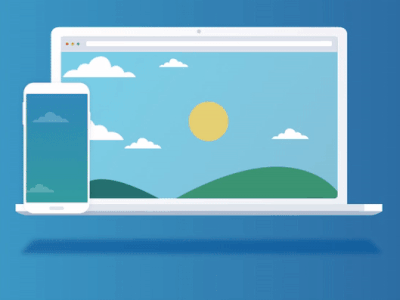
2. Use pop-up forms
Pop-ups are a great way to capture leads on your website. You can put compelling offers in there and users can fill out the pop-up from to opt-in. To make this
digital marketing strategy
less intrusive, we recommend using exit-intent triggered pup-ups only. This way your site visitors only see the message pop up when they were about to leave your website.

3. Use email marketing and marketing automation
Email marketing is an amazing channel for lead generation. Make sure you only send out emails to people who gave you permission via opt-in. Then you can use email campaigns to share offers and collect more information about your customers, building up to more high ticket offers, and using it to further build trust and segment your audience into different lead types. You can take advantage of
marketing automation to automate your email marketing as well.
4. Offer valuable lead magnets
Lead magnets are the number one digital marketing tactic to generate leads on a website. Many people are willing to give up their contact information for a relevant free goodie that solves a problem for them and almost sounds too good to be true. Think about a piece of content you can create that hooks your audience in and is something they would really want to have. Then, go ahead and create it and create a dedicated landing page for it. You can see lead generation page examples with lead magnets below.

If you want more lead generation examples and ideas and get inspiration for effective lead magnets, check out this post by Venture Harbour and this post by Snov.io.
The great thing about inbound marketing is that you can generate leads for your business for free by attracting them to you with completing content. You don’t have to pay for ads to get website visitors to turn into leads. If you still want to use paid lead generation strategies, check out these PPC lead generation examples by 7 Digits.
Lead Generation Websites To Follow & The Top Lead Generation Landing Page Examples
There are a number of big and small business websites out there that are crushing it when it comes to lead generation. The sole purpose of some websites is lead generation for the business they belong to. All examples below use organic lead generation with lead magnets. You’ll get some ideas and inspiration for lead magnets to create for your own small business. Here are the top lead generation websites to follow broken down by industry.
1. Lead generation in real estate
Dotloop, a real estate transaction management company, has created a free guide on how to win a bidding war. It’s a great real estate lead generation website and worth following if you’re interested in lead generation real estate companies.
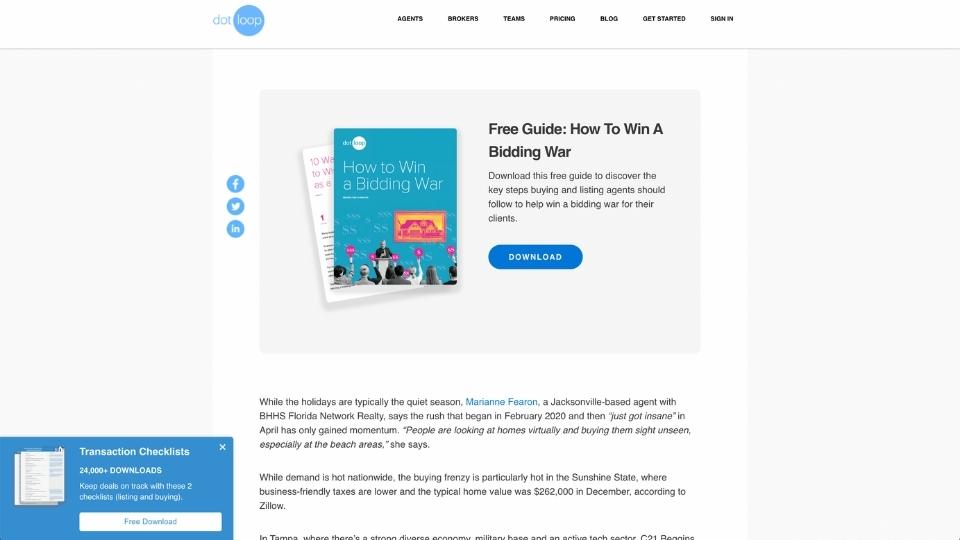
Other lead magnet examples for the topic of lead generation real estate are:
- Open house checklist for home sellers
- Equity estimator
- Free evaluation: What’s my home worth?
- Guide for first-time home buyers
If you're looking to outsource lead generation for your real estate company, check out these top 5 best real estate lead generation websites.
2. Mortgage lead generation website
Move Engine, a first-time buyer coaching company, has created a free ebook packed with examples of the most common mortgage mistakes and ways to avoid them.
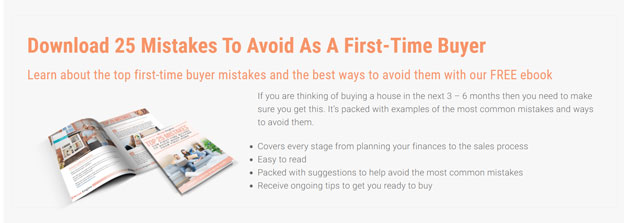
Other lead magnet ideas for your mortgage business are:
- Mortgage calculator
- Mortgage eligibility check
- Remortgage planner
- Property value check
- Free consultation with a mortgage expert
If you're looking to outsource lead generation for your mortgage company, check out these top 5 mortgage lead generation websites.
3. Lead generation life insurance
Cassaday & Company, Inc., an independent wealth management company, offers an on-demand webinar called ‘Life Insurance: Do You Need It?’ to generate leads.
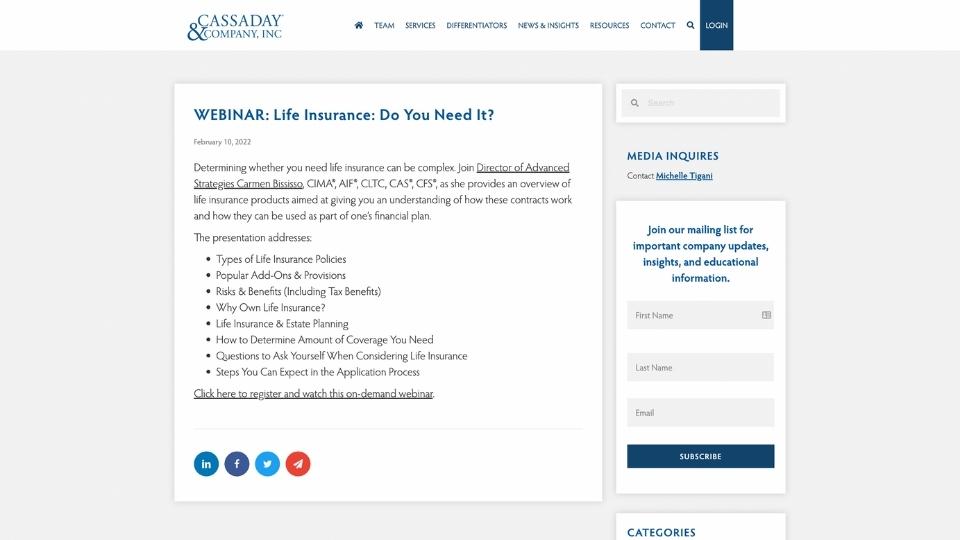
Lead magnet ideas for the life insurance industry are:
- Checklist for making insurance claims online
- Webinar
- Report or white paper with detailed information about a particular product
- Guide to providing life insurance for employees
- Case study of how your insurance agency had a positive impact on lives
4. Sales and marketing
Marketing, sales, and customer service software company Hubspot is very successful in organically generating leads by ranking content in Google and offering lead magnets to their visitors. This makes Hubspot a great lead generation website to follow and example to watch in the marketing and sales industry.
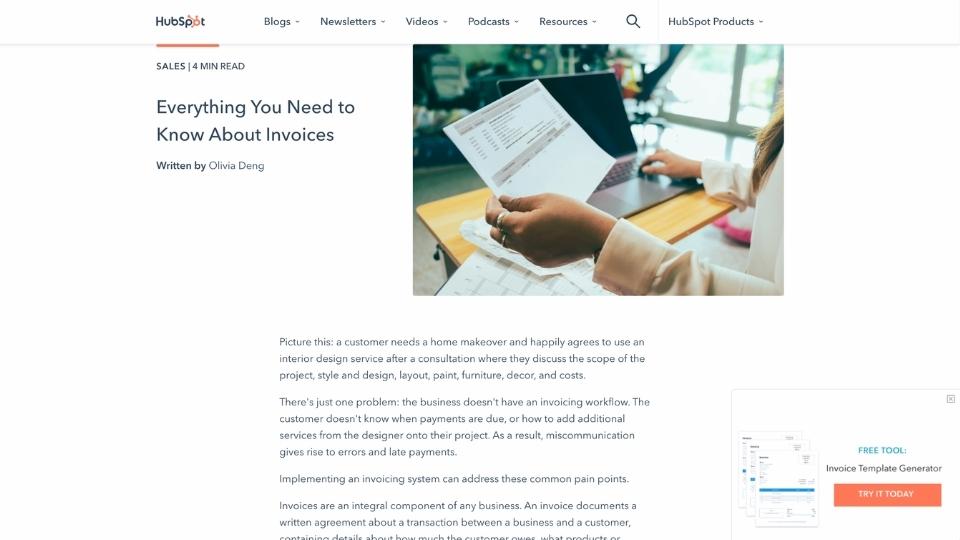
Want more? To see more lead generation landing page examples of more industries, check out these amazing posts by Drift and Unbounce.
Tools For Lead Generation: Which App Is Best For Lead Generation? Which Tool Is Used For Lead Generation?
There are a variety of tools for lead generation. Which one is best for your small business depends on your digital marketing strategy and your needs. A must-have tool that goes hand in hand with lead generation is a contact relationship management (CRM) tool. It allows you to store your captured leads information, segment them into groups, score them according to lead quality and close probability, and tag and contact them, and more.
The CRM for small businesses of our choice is ActiveCampaign. It includes on-page lead generation, email marketing, and more features you need to build a lead generation website.
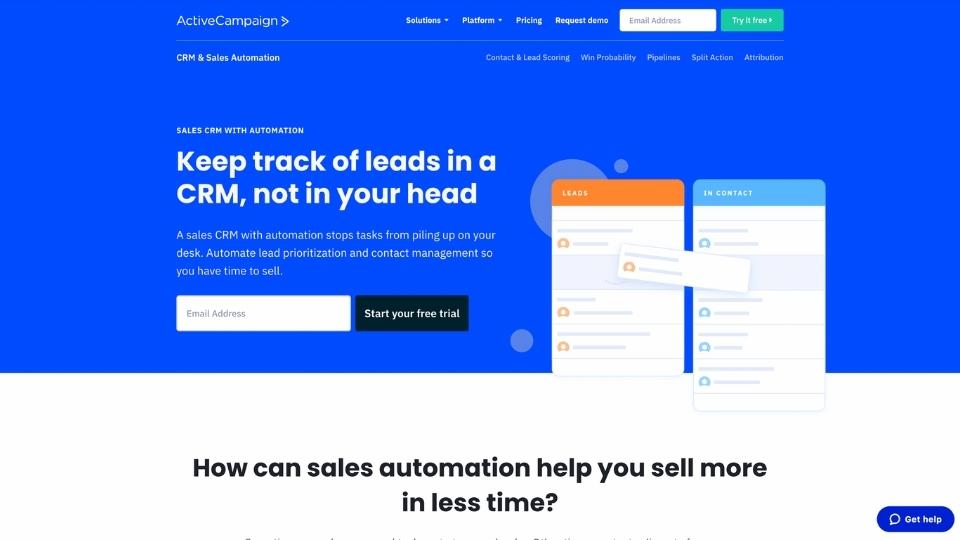
ActiveCampaign offers all the lead generation tools you need to get started turning your website into a lead generation website. You can build landing pages, create forms, get to store and manage all your contacts, build pipelines and funnels with automations, and more. And it also integrates with tons of lead generation apps. This way you can keep using your favorite lead generation tools and sync and integrate them with ActiveCampaign.
Try ActiveCampaign today for free!
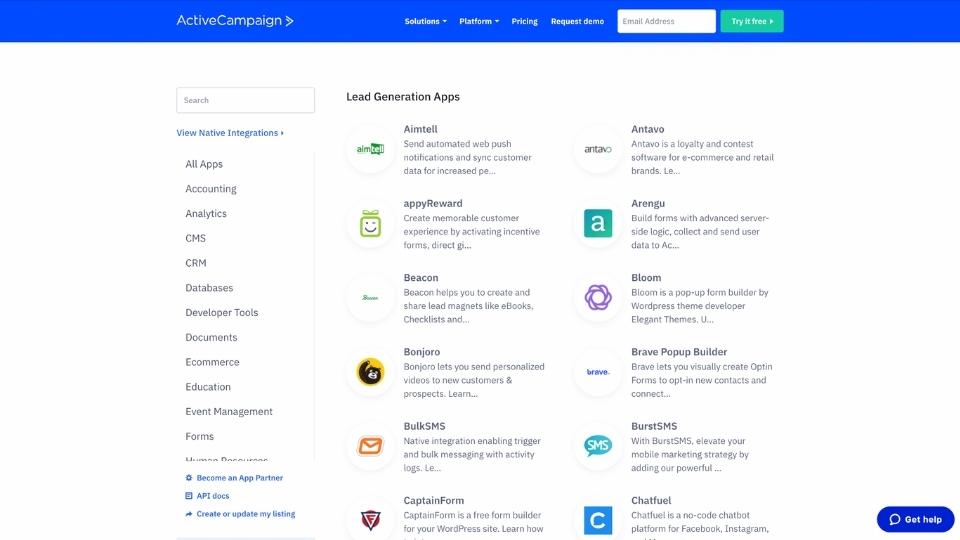
How To Build A Lead Generation Website: 10 Best Practices
Here’s a checklist of the 10 best practices for a lead generation website that delivers leads 24/7.
Lead Generation Website Best Practice 1: Start with a solid website
No one will convert on your website if it doesn’t look visually pleasing, isn't functional, or isn’t updated. The first step to a lead generation website is a website that actually works. If you've got problems with mobile responsiveness, load speed, or just general usability, you're not going to get the amount of traffic you need to be able to convert quality leads.
Lead Generation Website Best Practice 2: Build trust
Your website visitors are nowhere near making a purchasing decision just yet, when this is their first interaction with your small business. To change that, you want to build trust by showing them that you're a legitimate company with authority in your industry.
Have a page on your website you can link out to where you show who your small business is, what you're about, and provide information they need to make an educated buying decision. The best ways to build trust are testimonials, business awards, badges, certifications, partnerships, and an excellent about page.
Lead Generation Website Best Practice 3: Make contact easy
One of the most important best practices is to make contacting you easy. Your site visitors should never have to wonder how to get in touch with you. A prominent call-to-action in the top right of your nav bar and showing your phone number on your site help your lead generation website to generate more leads.
Lead Generation Website Best Practice 4: Consider your goals first
Take some time to think about what your digital marketing goals are. Answering these 4 questions will help you determine where you need to put the most effort into your lead generation website.
- What kind of leads do you want? How do you want them to contact you — phone, email, schedule a meeting?
- At what point do you want to connect directly with a lead?
- Where does your small business need the most support?
- Do you need more leads in the awareness, consideration, or decision making phase of their buyer's journey?
Lead Generation Website Best Practice 5: Add quality sign-up forms
When your forms convert better, you get more leads. One of the best ways to convert qualified leads on your lead generation website is to add high-converting subscription forms. Good lead generation forms only ask for the information you actually need. Fewer fields = more conversions.
You can see 23 lead generation form examples that convert like crazy in this post from WP Forms.
Lead Generation Website Best Practice 6: Have conversion opportunities for each stage of the buyer's journey
If you're looking to build a lead generation website that delivers leads 24/7, it's best practice to implement conversion opportunities that capture leads at every stage of the buyer's journey.
If you only have conversion opportunities for people who are ready to buy, you'll get qualified leads, but you won't get very many because you're missing out on those leads who just haven't recognized the improvement opportunity yet or haven’t made the decision to act and seek out buying a solution yet.
Targeting people in every stage of their buyer's journey ensures your marketing pipeline is always full of qualified leads who are working their way up to a buying decision.
Lead Generation Website Best Practice 7: Create buyer-persona-specific content offers
Turn your site into a lead generation website by developing content offers that address the specific needs and pain points of your ideal buyer personas. Guides, ebooks, and downloadable content are irresistible to a qualified lead.
Lead Generation Website Best Practice 8: Consider adding live-chat
Adding a live chat feature to your lead generation website that’s available all the time, makes it easy for anyone who has a question about your products or services to ask the minute they think of it. You don’t have to be available to chat with people live all the time at all. You can simply set it up to ask them for their email address and contact information to get back to them with the answer to their question and capture leads this way. Try conversational marketing for free today!
Lead Generation Website Best Practice 9: Get creative with calls-to-action (CTAs)
CTAs don’t have to be the same old boring ‘Contact Us’, ‘Sign Up’, or ‘Subscribe’. Getting super specific with your wording can make it more compelling and get you more leads.
Lead Generation Website Best Practice 10: Continuously test and optimize
When building a lead generation website, you’re never really finished. You should always review your performance, compare KPIs, test new CTAs, and implement new tactics to see how you can improve conversion rates. A long-term successful lead generation website is always changing and optimizing to meet its visitors’ wants and needs.
How Do I Get Leads From A Website? 33 Simple Ways To Optimize Your Website For Lead Generation
Here are 33 lead generation tips you can implement on your lead generation website without writing any code. The more lead generation and prospecting strategies mentioned below you implement, the more you increase your chances of building a lead generation website that successfully and reliably delivers your small business leads 24/7.
Lead Generation Tip 1: Publish High-Quality Content
If people visit your website, they won't stick around unless you give them a reason to. A great reason for your website visitors to stay is well-written, well-structured content on your website that helps people out and solves problems.
It's not enough to just have a home page, contact page and an about page. People want to learn more. If you really want to get people attracted to you, recognize you as an expert and convince them to buy from you, you need to have content on your site that people can check out to learn more.
Make sure you have high-quality content because poorly written and formatted and insufficient content doesn't serve you. The whole point of content marketing is to help people to make a better informed buying decision by educating, convincing, inspiring, establishing trust and showcasing your expertise.
You need to have an area on your website that you update regularly and where you constantly publish content, like a blog for example.
Lead Generation Tip 2: Add More Calls-To-Action (CTAs)
You need to call people to action and guide them and tell them what to do next. You also need to have a digital marketing strategy and clear goals. Only when you know what desired action you want people to take next, you can call your site visitors to action strategically.
The most important section to have a call-to-action on your website is the section above the fold. That's the area that people see when they land on your website without scrolling down. By having a strong CTA above the fold, you have a chance to convert every visitor, even the ones that don't scroll down or interact any further with your site. You maximize your chances to capture your users' contact information and generate more leads.
That's really, really important. We all are busy nowadays and use social media as a distraction to calm down and to not have to think hard. We're just mindlessly scrolling through our feeds and browsing the internet oftentimes. And we need direction.
You need to give people direction and guide them and tell them what the next steps are and what to expect.
Lead Generation Tip 3: Have A Strategic User Journey
A user journey is the journey that you want your users to take on your website. You want to have all of that mapped out and strategically guide people towards your money pages on your website. Your money pages are the pages on your website that make you money.
That's where you want to guide your visitors in a strategic way. Your internal linking shouldn't be random. Think about a logical site structure, clear navigation and a good user experience when mapping out your buyer's journey and you'll get more sales and are able to capture more leads for your small business.
The interface should not look cluttered, be clear and easy to understand, user-friendly and intuitive. That's how you maximize your lead generation effectively and turn your website into a lead generation website and actually get customers.
Lead Generation Tip 4: Create Content That Solves Problems
You want to create content that solves problems and helps people out. The whole point of content marketing is to give people more information, so they are able to make a better, more informed buying decision. It also allows you to build trust and showcase your expertise. Content marketing reassures people that you're the right person for the job and have the perfect solution for them.
So you can't just create any content that you think your audience might like. You want to strategically think about what problems and challenges your clients have and create content that answers questions related to that. This is what makes your content valuable.
Have a look at this blog post where we answer 100+ digital marketing questions for small business owners with little experience in digital marketing who are looking to raise brand awareness and track ROI.
The whole point of being in business is solving problems for people and getting paid for it. You need a content marketing strategy for your small business and make sure your content is actionable and serves your business goals.
Lead Generation Tip 5: Speak To Your Niche Market And Do Not Try To Speak To Everyone
You want to have a niche in your market that you focus on as a small business, Don't shy away from getting really, really specific. Ideally you pick a niche that is very narrow but very deep. So you can get deep into your topic and still stay focused on a narrow field that you can dominate and become an authoritative expert in.
Strategically only speaking to that niche affects your messaging, copywriting, the pages of content you create, etc. If you set yourself up too broad and you try to speak to everyone, what happens in reality is that you end up speaking to no one.
In order to make your small business marketing effective, you want it to be laser focused. You need to create buyer personas and segment your target customers into groups to personalize and tailor the marketing messages you send to them. Your communication should feel like a one-on-one conversation. This makes your small business stand out from all the mass ad messaging people are exposed to.
You can always expand later if you're successful in one niche and target other market segments to grow your small business.
Lead Generation Tip 6: Create More Lead Magnets And Landing Pages
A lead magnet is anything you give away for free in exchange for contact information of new leads for your business. It's a document with valuable information that answers questions and solves problems and attracts leads to your small business like a magnet.
You can drive even more traffic to your lead magnets, if you create custom landing pages for them. You can drive ad traffic to your landing pages and also optimize them for SEO and rank your landing pages in Google. You can also leverage internal linking and drive your website visitors to those pages strategically with a site structure that's optimized for that. Here's a list of lead magnet ideas you can create.
Simply having a button that says "Contact Us" or "Subscribe to our newsletter" with no compelling incentive upfront is just not enough. You need to offer value first and trust in the principle of reciprocity.
When you give a person a free gift, they feel obligated to give you something back in return. So you're more likely to collect email addresses and leads. It also gives you the chance to prove that you're reliable and trustworthy and deliver on your promises when you deliver your lead magnet.
You want to have a few lead magnets and landing pages, have a strategy and be very clear about where you want to lead people, what paid product or service you want to sell to them, how to interact with them and make the offer, how and how many times to followup, etc. Your paid offer has to be directly related to your free offer so you can be sure it's relevant and you improve your chances of turning your leads into customers for your small business.
Lead Generation Tip 7: Put Lead Magnet Offers In Exit Popups
Exit popups are messages that suddenly appear on a screen that are triggered by an exit intent, meaning when a person moves the mouse towards one of the upper corners of the window to leave your site. The reason why exit popups are so powerful is because they're not intrusive. If you have random pop-ups pop up on your website, it interrupts people and is disturbing their user experience. Especially if it covers up the main content of your website and is pushy, salesy and intrusive.
Exit intent pop-ups don't interrupt your users. They were going to leave anyways. And if you offer free value in them instead of trying to sell, that makes it even better. They give you one last chance to capture leads for your small business.
Lead Generation Tip 8: Include Customer Reviews And Testimonials
Customer reviews and testimonials are the personal recommendations of today. They are powerful because they are a form of social proof. Social proof is an important factor of persuasion. It's likely that the people who have already purchased something from you have had the same or a very similar problem than the person who's still indecisive and on your website at that moment.
The experiences of people who have something in common with us really influence our decision making. Positive reviews and testimonials are perceived like a recommendation from a friend or family member. That's how valuable they are.
You always read the reviews on Amazon and other sites before you buy, don't you? Me too. We just can't miss out on the insight how other people have liked a product or service and if they are happy with it.
If you're just starting out as a new small business owner or as a new entrepreneur and you haven't made any sales yet and don't have any customer reviews, here's what you should do: Give away your product for free to friends or family members to test and validate your idea. Leverage your connections and ask for feedback. Identify people in your target audience and give away free samples or demos. If you offer services, offer your services for free to people and ask them for their feedback.
After doing this for just a couple of times, you'll have customer reviews and testimonials to use. You can also write case studies about those experiences. This kind of social proof gives you credibility and validation for your idea and for your small business.
If you're an established small business and you just haven't happened to have collected reviews and testimonials yet, waste no more time and call up your existing customers and ask them for a review. You can use it as an opportunity to catch up with them and reconnect. Personable interactions and follow ups show that you care and help to build a long-lasting and meaningful customer relationship. It symbolizes that you want their feedback and their opinion matters to you. They matter to you.
To give people a compelling reason to leave you customer reviews and testimonials, you can incentivize it. Read the full article: How To Use Customer Reviews In Your Digital Marketing Strategy
Lead Generation Tip 9: Use Trust Seals
People buy from people they know, like and trust. How do they know they can accept your word, hand over personal information and give you their credit card details? The answer is: they don't know. So, you need to take the right steps to win their trust.
First, show them that your website is a safe place to visit. Have an SSL security certificate installed and use HTTPS. The last thing your visitor wants to see is a browser message that says "This site is not secure". Google Chrome now allows you to click on the little padlock next to a URL to see the site's SSL details.
Customers also like to see security badges, like those from Norton and McAfee. Studies show that online shopping carts which include trust seals such as "Verisign Trusted", "PayPal Verified" or "Secure payments by Stripe" can earn conversion rates 40% higher than those without trust seals.
Along with trust in your website security, customers need to develop trust in your business practices. Your shopping cart should include badges for your money-back guarantee, on time delivery, or other performance promises. You should also display any certificates or awards your business has earned.
Lead Generation Tip 10: Use All 4 Types Of Media Formats: Text, Images, Audio, and Video
Some people like to read. Others learn more effectively by listening. And still others can best be reached with images or by watching videos. So, if you want every type of customer, make sure that your brand messages and actionable offers are delivered through text, images, audio and video.
To approach this in a step-by-step fashion, start with your website text. Make sure it is clear, concise and compelling. Then find or create images which embody and enhance your message. Where appropriate, add charts and graphics to your design to build an infographic element.
Audio - especially podcasting - is very hot among users who like to listen to content while they drive or exercise. You can also create small snippets or sound bites to entice website visitors to listen in depth. Highlight one of these with an audiogram, where the viewer sees soundwaves and can click to listen.
Once your brand messaging, content and specific offers are well-defined, add video to your content mix. Video offers the visitor a much more rich and intense experience. The visitor can "meet" you face-to-face, get first-hand exposure to your expertise, and start thinking of you as someone they know, like and trust.
Until the pandemic crisis is solved, online video is sometimes the only way your customer can encounter you in person. You can't train people to use your product in person and you can't hold an in-person event to make an announcement. But you can do all of those things online with video.
Lead Generation Tip 11: Add More Forms To Your Website And Create More Opportunities To Opt-In
If your only mechanism for gathering leads is the form on your contact page, you are missing out on the best opportunities to get more contacts through content. The more forms you have on your website, the more opportunities you have to capture lead information. When you offer something free on your website (which you should), add forms so that visitors can opt-in to download the content or sign up for the service.
Don't ask for too much information. If you capture a name and an email address, you have a lead which you can further qualify and you can always capture more information later. But if you go on to ask for an address, phone number and lots of other qualifying information in the first step, chances are the visitor will click away.
Pro tip:
Your opt-in forms can be persistent. In a page layout with columns, the main page content in the center can scroll down while the side column with your form stays put. Combine the timing of your compelling offer with the handy position of the opt-in form, and your visitor will be ready to take action.
Make sure to leverage marketing automation to follow up with your leads. Their attention, awareness and receptiveness are at the highest level right after they opt-in and give you their contact information. This is when they expect to hear from you and get back to them. You can follow-up automatically using the information you have captured and personalize your automated emails dynamically. This way they don't sound general and robotic. Followup 5-12 times before you 'give up' to maximize your chances of success. Persistence is a decisive factor when it comes to closing deals and making sales.
If you are looking for a marketing automation tool that was built with small businesses in mind you can use to capture lead information with through forms and then follow up automatically, check out ActiveCampaign.
Lead Generation Tip 12: Measure And Analyze User Behavior & Test And Optimize Website Performance
The biggest advantage we have with digital marketing over traditional marketing is the performance data we can capture. Marketing is no longer a black box approach, with no way to tie results to various elements of your investment. Steady improvement in marketing ROI can be powered by a basic sequence: measure your results, analyze the data, and use your marketing analysis to tweak your website for improvement.
The best place to start is Google Analytics. This comprehensive tool provides a comprehensive website analysis. Google Analytics can help you understand who your visitors are and why they might be bouncing off your website without engaging.
Another powerful tool for studying your visitors is heat mapping, which can show you what visitors click on, scroll through or ignore, essentially measuring the hot and cold elements of your page.
Regular analysis of your visitor data will help you highlight the strongest elements of your website, fix the weaker elements, and continuously improve your ability to capture leads and win customers.
Lead Generation Tip 13: Add A Live-Chat Feature
Everyone has a phone. But when a visitor just has a quick question, they don't want to call you.
That's where live chat comes in. Chat is the form of online communication requiring the least commitment on the part of the visitor. The visitor can remain anonymous and avoid the friction of sales contact - but they are still engaging with your website - and that is what we are after.
Chat works best with a live advisor. When they are busy or absent, a chat bot can answer FAQs and can ask for contact details so that you can follow up later. But whether the chat session is answered by a person or a chat bot, the purpose of chat is to help the visitor.
The power of chat comes from giving and receiving help in a dynamic interaction. The visitor is no longer passive, but has entered an active dialogue with you. You are the source of answers to their questions. You are building a friendly, trusting relationship which will increasingly make it likely that, at the end of their buyer's journey, your offering will be their choice.
Lead Generation Tip 14: Have Your Phone Number On Your Website
Yes. We just said that many visitors don't like to talk on the phone, but a few actually prefer the phone, and at the end of the day, your NAP (name, address and phone) are a key part of your credibility and trust.
In most cases, you want a local phone number. Toll-free numbers don't give you as much credibility, and for service businesses, seeing a local exchange gives the visitor a feeling that you are a neighbor as well.
Bear in mind also that some visitors are unable to fill out your form or type responses to your chat. Government statistics show that Americans take an astonishing 1.1 billion trips per day, 90% of the time in their personal car - so when they can't click or type - let them call you!
Lead Generation Tip 15: Speak To Your Visitors, Not At Them
Don't you hate it when you find yourself on a plane, trapped next to a stranger who talks incessantly about himself? It's OK if you are bursting with enthusiasm about your company and products... but it's not OK to forget that the hero of your brand story is the customer.
What's in it for them? Talk first about the solution to their problem, the value they will receive, how you will make things better or faster or less complicated and the positive impact this will have on their life.
There will be time to present the great features of your product and to slip in some words about your long experience and awesome accomplishments. But start with customer obsession. Talk to the customer about what the customer needs and show the customer how they will benefit.
Lead Generation Tip 16: Use Power Words To Inspire Emotion And Action
Power words are those which can actually make the reader feel something. From the earliest days of marketing, copywriters have used familiar power words for one simple reason: because they work.
To make your reader feel a sense of urgency about an offer, use words like "now, soon, expires or final". To put your reader at ease, use words like "free, easy, simple, tested or proven". To convey a sense of luxury, use words like "rare, select, limited or genuine".
Remember, as noted in tip Lead Generation Tip #15 above, that the most powerful word in marketing is "you". A principal objective of your branding is to connect with your visitor emotionally. Power words are a simple tool for reaching your audience on that level, and they work when you place them in the right stories and offers. Don't overuse them, but definitely use them where appropriate and you will see results.
Lead Generation Tip 17: Avoid Cookie-Cutter Website Templates
Too often, when you DIY your small business website with a website builder, you choose a nice-looking template with not much else in mind. And then you end up force-fitting a two line header in a field that's been designed to only look good with single line headers, and your website texts and images just don't complement the template at all. Even worse, the resulting design, text and graphics no longer align with what you found attractive in the first place.
The problem with templates is that they are one-size-fits-all. But you have a unique brand message, culture and personality. That's why you need a website that is custom built from the ground up, with your business in mind and not with anybody else's business or customers in mind.
The layout of your web pages and the underlying structure of your website are two areas where mistakes will have the worst impact - and where a digital marketing expert can help. A professional digital marketing company can do something you can't do: see your brand and value proposition as a customer will see you. We do this everyday and optimizing from that perspective can be priceless in making your website design choices.
Lead Generation Tip 18: Have A Professional-Looking Website
You want people to trust you. You want them to hand over sensitive personal details and credit card numbers. It is absolutely critical that you avoid anything on your website that could cause the visitor to hesitate and lose confidence in your qualifications.
That means you have to show 100% professional competence. That means no typos or errors in grammar, with a coherent look and feel to the whole website design. Everything has to be on brand. The user must enjoy a great user experience and a frictionless path from where they are to where they want to go.
Study the most successful websites and you will see best-in-class user experience principles in action. Use white space or negative space generously. Have a clean looking user interface that is not cluttered. Make sure everything on your page is there for a reason, not to look "cool". Have your website reviewed by a digital marketing expert.
Your website is your online storefront. When you see a store that looks disorderly, do you want to go inside and browse? No. Even if you need what they sell, you will probably keep walking. As the saying goes: You never get a second chance to make a first impression.
Lead Generation Tip 19: Offer Value And Content For Each Quadrant Of The Content Marketing Matrix
The essence of content marketing is attracting attention and generating leads by creating, publishing and distributing valuable content for a targeted audience. You need to offer content on your small business website. Early in the buyer's journey, the people who visit your website (and your competitor's) want to learn about your type of products and services. To keep them coming back to you, instead of your competitor, you must offer them value in each of the four content quadrants: Entertain, Educate, Convince and Inspire.
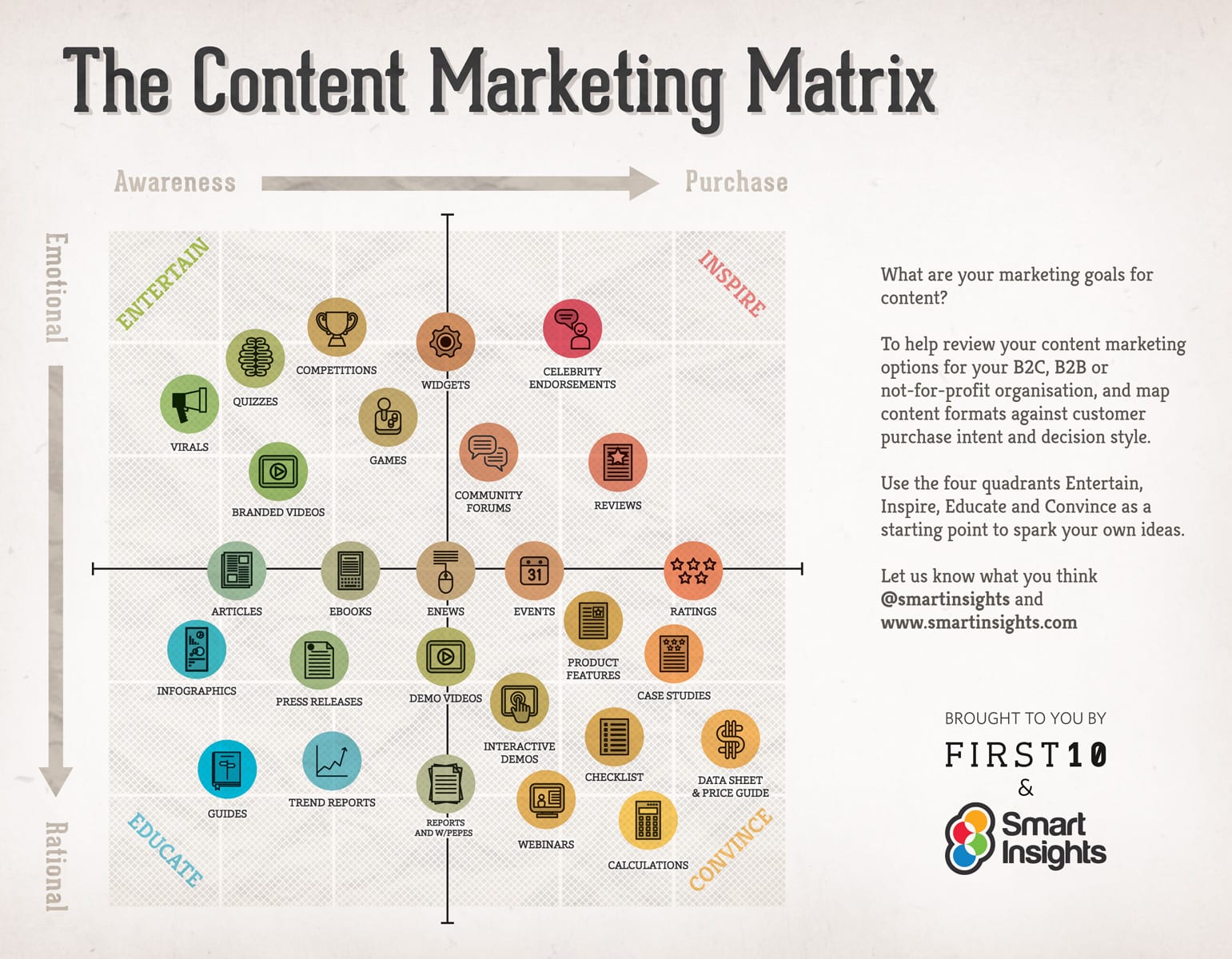
Example:
Let's say you are a seller of solar panels.
In the Entertain quadrant, you can have branded videos showing the unboxing and installation of your panels, offer your website visitors a quiz where they can answer questions and find out which solution is right for them, and include a drawing or competition with a prize.
In the Educate quadrant, you can offer a free downloadable guide to installing a complete solar system as a lead magnet, showcase which publications you've been featured in, and have a blog article on how to buy lithium batteries.
In the Convince quadrant, offer your data sheets and product comparisons, include a case study on your site with charts showing how a local small business saved money by cutting the cord to the power company, and host webinars.
In the Inspire quadrant, focus on content that is more emotional than rational. Here is here you want your customer reviews and testimonials, and endorsements from a popular influencer, celebrity or otherwise highly-regarded person in the industry.
Don't lose sight of the fact that your primary goal is still to sell - but you're playing a long-term game. You will enhance your sales by enriching your website with content marketing.
Lead Generation Tip 20: Get Leads From Other Websites By Building Partnerships And Guest Blogging
The target audience of other businesses that are not your direct competitors may overlap with yours. In the above example, our seller of solar panels is linked by every customer to the sellers of solar batteries, charge controllers, inverters, fuse blocks, wiring and other accessories.
That seller is also linked to makers of electrical tools, publishers of DIY books and producers of solar power videos. Other potential partners include authors, industry experts and influencers - as well as the many retailers and technicians who sell or install solar components. Any one of these related content producers could be a partner.
When you build partnerships, your partners refer leads to you that they generate with their websites and you pay them a commission for the referral in return. That way you can generate leads for your small business on autopilot using other people's websites.
Another way to do it is guest blogging. You can write an article and within that article link to your website. You'll get free referral traffic that you can then convert into leads. Click here to learn more about guest blogging on our blog. In addition to guest blogging and writing blog posts, you can also write news articles, product and press releases, work with influencers.
Lead Generation Tip 21: Leverage Social Media Marketing
Social media has changed our lives. It is everywhere, it is easy to access and it is free. Social media is a great traffic generator, with the power to turn your audience into leads and your leads into paying customers. But success will require you to develop and follow a social media marketing strategy.
First, set your social media marketing goals, research your buyer personas, and shape up your social media profiles. Share high-quality content, provide in depth information, and be sure to use keywords in your bio or profile description. Add a link to your website in your profile and actively reach out to your audience and keep them engaged. Ask and answer questions, offer assistance and send congratulations. Make knowledgeable comments any time it seems appropriate.
Be disciplined and post consistently. You should also follow or monitor the frequency of posts by your competitors.
To create a comprehensive social media strategy powered by the latest techniques, sit down with a professional digital marketer. We can help you to get the most out of social media for your small business.
Lead Generation Tip 22: Create A Handy Tool
One of the most powerful forms of free content is a specialized tool. This can be something as complex as a smart phone app or as simple as an online calculator. Tools provide value and you can have people enter their contact information to see the results or use the tool.
Our example solar panels company could promote a solar panel sizing calculator - which allows prospective customers to enter how much power they need to produce and get recommended specifications for number of panels, battery capacity and types of accessories needed.
More examples and inspiration for tools you can buy or create and put on your website:
A fitness club can offer a BMI calculator, a designer of pressure controls can offer a tool to convert PSI to millibars, an optics dealer can offer a star chart, and a banker or realtor can offer a mortgage calculator.
Where can you find a tool to fit your business? It may be possible to find a ready-made tool and simply embed it on your website. Or hire a developer to create one for you. Either way, you will find that tools are easy to employ, rank well in searches and promote active engagement with visitors.
Lead Generation Tip 23: Start A Challenge
A challenge, competition or contest offers you one of the best shots at attracting viral attention. Challenges are trendy and fun for almost all audiences and almost nothing works as well to generate buzz - and to capture leads.
The best prize for your challenge is a free unit of your product or free access to your service. You don't want to give away cash, because that can attract people who are not at all interested in what you do.
Specify that to sign up for your challenge or contest, every entrant must provide their name and email address. Only the winner(s) will receive the free product - but you will receive contact details for lots of new leads who have just demonstrated that they want your product or service.
Lead Generation Tip 24: Keep Your Content Fresh And Updated
To keep people coming to your website, you have to keep your content fresh. Keep up with keyword research to know what your audience is searching for most often. Be sure to mention the latest trends in your blog. If that's what you're reading about - your audience will be as well.
Add some seasonal content. If your clients are building managers, they need to get ready for leaf-choked gutters in the fall and salt on the carpets in winter. Everyone likes to hear about success, so be sure to share testimonials and customer success stories.
Ask your top employees to write for the blog. Write an update of recent customer FAQs. Invite your customers to contribute a guest post. Or if you can't think of a single new thing to write about, ask your customers to suggest a product demonstration, tech topic or video they would like to see.
Also be sure to update the stats you mention and quote in your content. If you mention a number from 2017 and there are new numbers from 2021, you want to switch it out for the most recent one.
Lead Generation Tip 25: Get Involved In Your Community
Finally, one of the best ways to make your company widely known and respected is community involvement. By joining an existing community program or starting your own (yes, that's an option), you create a public platform for highlighting your company, products, services and special skills. You also send a strong message about your company culture and core values.
To find ways to get involved, look no further than your own industry. For example, if you are in dental care, you could join with a dental school to help support a deserving student. Throughout the year, hundreds of students and their families will be exposed to your web address and brand.
Lead Generation Tip 26: Get An SEO Marketing Tune-up
Before they can become a lead or a prospect, your potential customers have to find you and organic traffic is an amazing and free traffic source. The basic principles of search engine optimization (SEO) are:
- Make sure your website is accessible to search engine crawler bots.
- Use the right keywords to guide searchers to your specific offer content.
- Use compelling title tags to help search engines rank your subject.
- Add a meta description so results display a summary of your content.
- Publish high quality content so that searchers have a reason to visit.
- Attract backlinks to gain authority.
Lead Generation Tip 27: Draw Visitors With Content
Take the time to develop blog posts, white papers, downloads and other content that your target prospects will see as valuable information or engaging entertainment. Ask your visitors to share your site with others, and provide social media sharing buttons to make it easy.
Upgrade your "pillar pages". Every website needs three or four powerful pages that will always be of interest to your subject matter. The more effort you put into your foundation content, the more traffic you will see from visitors sharing your pages.
Lead Generation Tip 28: Make One Clear and Concise Offer
Visitors won't hang around long if they can't figure out what your website is about. Your home page is not the place to talk about synergy, paradigms and other corporate-speak. It is the place to quickly and clearly state who you are, what you offer and how your value proposition will benefit the visitor.
You want your website visitors to immediately be able to understand what the page is about and what you want from them and what they need to do. Analysis paralysis is real. If you overwhelm your visitors with options, chances are, they'll end up choosing none.
Lead Generation Tip 29: Use Compelling Images
A picture says more than 1,000 words. It can be powerful and optimize your conversion rate when you find compelling images that not only support but embody the message you want to get across and express the essence of your brand. Using amazing images that tell a story, can lead people to feel like they don't even have to read the text anymore because they are already convinced that this is exactly how they want to feel. Consider investing in custom graphic designs and photography.
Lead Generation Tip 30: Be Mindful Of Color Psychology
The way colors are perceived has a huge impact on human behavior, spanning across the board from causing headaches to instilling peace. Now, this all depends on your upbringing and your culture and your personal subjective experiences to a certain degree. However, you can use colors to evoke desired emotions in your audience. This is called color psychology. Remember, people identify with your WHY and how you make them feel and not with what you do. Be aware of colors when it comes to your web design, branding and especially your calls to action.
Learn more in lesson 3 of the Free Brand Story course:
Lead Generation Tip 31: Use Lists To Show The Main Benefits Of Your Offer
Bullet point lists - ordered lists and unordered lists - offer a way to quickly outline concepts, highlight important information and break up long passages of text. More importantly, they make information easy to remember. Here's how to use bulleted lists like a pro:
- Use bullets where a list of steps or items feels natural.
- Don't use bullets too often, as this can be confusing.
- If possible, organize points by importance or chronology.
- Bullet points of the same length are easier to read.
- Don't use too many. A good number is about five.
Lead Generation Tip 32: Make Sure Your Website Is Mobile-Friendly And Responsive
Mobile users don’t want to wait for screens to load, and they don’t want to fight with tiny pop-up ads and scroll infinitely to be able to see and read your content. Make sure your entire website is optimized for mobile devices like smartphones and tablets. A responsive and mobile-friendly web design automatically scales and adjusts to any screen size and any device type.
Nowadays even more people browse the web on their mobile devices than on desktop devices. So, mobile friendliness is no longer just nice to have, it’s a must if you want to get conversions on your website and be seen as serious and professional in business.
Lead Generation Tip 33: Streamline And Simplify Your Website Navigation
The right approach to website navigation is to focus on the user and on guiding them to the action you want them to take with minimum effort.
Keep it clean, clear and simple. A study by Business Insider found that 25% of visitors who left without buying did so because the website was too complicated.
Use plain words. A navigation menu is not the place for fancy language or technical jargon. Studies by Google have shown that complex web sites do not perform as well as plain, uncomplicated designs.
KPIs For Lead Generation
When it comes to lead generation, there are a few tried-and-true key performance indicators (KPIs) you should track. There are so many lead generation metrics that can offer deep and holistic insight into the true performance of your digital marketing efforts, and not just scrape the top of the barrel.
Here are the top 16 lead generation KPIs every small business owner should track to boost the overall performance of their lead generation website.
- Lead capture and conversion rates
Captured leads / Total visitors = Lead conversion rate [%]
Customers / Captured leads = Sales conversion rate [%] - Attribution channels
Track the percentages of how many leads each digital marketing channel contributes to your overall lead generation.
E.g.: SEO 54% (Lead magnet 1: 75%, Lead magnet 2: 25%), Social media 36% (Facebook: 16%, Twitter: 13%, YouTube: 5%), Other 10% - Engagement after capture
Track your email open rates, click rates and other engagement metrics from your captured leads. The more engaged the leads are, the more likely they are to buy. - Revenue
Revenue = Sum of number of sales x prices of goods and services - Return on investment (ROI)
ROI = Profit of investment / cost of investment - Profit
Profit = (Sum of number of sales x prices of goods and services) - expenses - Organic traffic
Track the number of organic website visitors who found you through search, especially regarding the pages that promote your lead magnets. - Time on page
The amount of time users spend on a page. - Lead quality
Track the percentages of the different qualities of leads your lead generation website attracts and optimize your lead value. Below, you can see an overview of the different types of leads.
Information Qualified Lead (IQL):
Information qualified leads are people in your target audience who you know find value in the information of the content you offer. They feel addressed by your content and it resonates with them. They are your ideal buyer personas but still strangers to you and your business.
Marketing Qualified Lead (MQL):
Marketing qualified leads are contacts who've engaged with your marketing efforts but aren't ready to buy yet. An example of an MQL is a contact who fills out a landing page form for an offer.
Sales Qualified Lead (SQL):
Sales qualified leads are contacts who've taken actions that indicate an interest in becoming a paying customer. An example of an SQL is a contact who fills out a form to ask a question about your product or service.
Product Qualified Lead (PQL):
Product qualified leads are contacts who've used your product or service and taken actions that indicate an interest in becoming a paying customer. An example for a PQLs is a contact who got a free trial or limited version of your product with options to upgrade.
Service Qualified Lead:
Service qualified leads are contacts who've indicated to your customer service that they're interested in becoming a paying customer. An example of a service qualified lead is a customer who submits a contact form to tell you they’d like to level up. - Customer lifetime value (CLV)
CLV is a measurement of how valuable a customer is to your small business, not just on a purchase-by-purchase basis, but across the whole relationship. - Number of new meetings
Track the number of new meetings scheduled by your captured leads. Lead generation and appointment setting go hand in hand. - Time to first contact
Track the time it takes you to contact a lead. If you’re not reaching them quick enough, you might miss out on opportunities. - Time to close
Track the average time it takes from the lead capture to the sale. - For paid marketing: Cost per lead
Track how much you spend on ads to get one lead. - Cost per acquisition, customer acquisition cost
Track how much you spend on ads to get one customer. - Return on ad spend (ROAS)
ROAS = (Ad revenue / ad spend) * 100
How Can I Get Free Leads?
Inbound marketing is a great way to get free leads for your small business. Inbound marketing is an umbrella term for any form of marketing that attracts customers by creating valuable content and experiences tailored to them. Inbound marketing forms connections people are looking for and solves problems they already have. This makes inbound marketing more of a business methodology because it is based on the core belief that you don’t want to interrupt people and be pushy and salesy, but attract customers by showing them value.
For example: SEO is an amazing way to organically attract leads to your small business for free. Learn more in the section below.
What Is Lead Generation In SEO? & What Is The Difference Between SEO And Lead Generation?
Lead generation is the process of cultivating an interest in your business to build an ongoing list of potential customers, so called leads.
SEO (search engine optimization) is the practice of refining web pages to ultimately improve their ranking on search engine results pages.
Lead generation and SEO are both part of marketing. The two types of digital marketing can actually be perfectly combined in a digital marketing strategy. You can boost the performance of your lead generation website by ranking your web pages in Google for relevant search terms and getting free clicks.
To optimize your lead generation website for SEO:
- Audit your website with our free SEO audit checklist
- Use SEO tools and fix the recommendations and errors (You’ll find tool recommendations in our SEO checklist.)
- Do keyword research and find relevant keywords you can realistically rank for
- Create an ongoing content strategy to update your existing content and create new content pages around the keywords
- Create a backlink strategy to earn links to your website
- Optimize your website from an on-page SEO, off-page SEO, and technical SEO perspective
- Measure your results and track your rankings as well as your competitors’ performance
All businesses need a steady stream of leads to grow and survive. Creating an SEO lead generation campaign is not only going to ensure your ongoing marketing efforts stand a great chance of succeeding in an oversaturated market. It will also help future-proof your web content by maximizing the opportunities to gain new leads with a strong online presence and great user experience.
To learn more about how SEO can complement your lead generation efforts by driving awareness for your small business via organic traffic to your website, check out this post about SEO, and download our free SEO checklist.
How Do Small Businesses Get Leads?
There are a variety of ways small businesses get leads. Have a look at the chart below. It shows the results of a study by Smart Insights.
In order not to put all your eggs in one basket, it is advisable to use multiple digital marketing channels for your lead generation. You can use the channels shown below to drive traffic to your lead generation website, where you can capture the lead information.
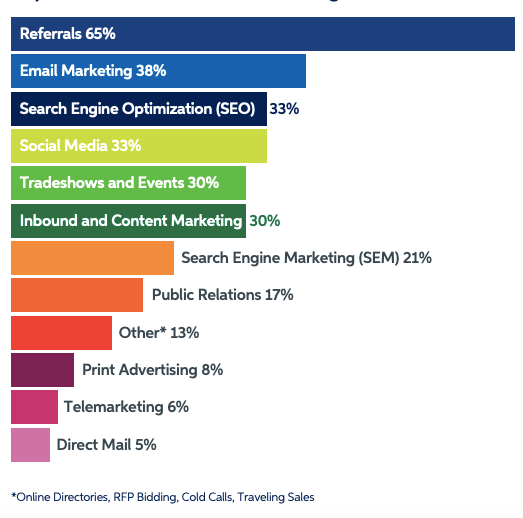
Lead Generation On Social Media
Social media platforms are a great way to generate leads both organically and with ads. They give you the opportunity to drive traffic to your lead generation website. In the following chapters, you'll learn about lead generation using social media and how to use different social platforms for lead generation on social media.
LinkedIn For Lead Generation: What Is LinkedIn Lead Generation?
To use LinkedIn for lead generation, you can promote your lead magnets and content in your LinkedIn posts and generate leads organically when your audience members click on the links in your posts.
Another way to use LinkedIn for lead generation is to use lead generation ads on LinkedIn.
Lead Gen Forms remove the main barrier to online conversion. Forms that have to be filled out manually by prospects. When LinkedIn members click on your ad, their profile data automatically populates a form they can submit with one click. Visit the link above and follow the instructions on the LinkedIn website to create lead gen forms, as well as LinkedIn ads in the newsfeed, in messages, and on desktop.
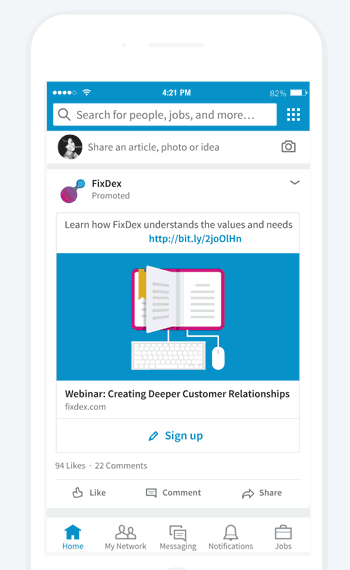
You can integrate LinkedIn Lead Gen Forms with ActiveCampaign. With ActiveCampaign and LinkedIn Lead Gen Forms, you can easily manage your leads and automatically leverage what you have set up already.
Lead Generation On Facebook
To do lead generation on Facebook, you can promote your lead magnets and content in your Facebook posts and thus generate leads organically when your audience members click on the links in your posts.
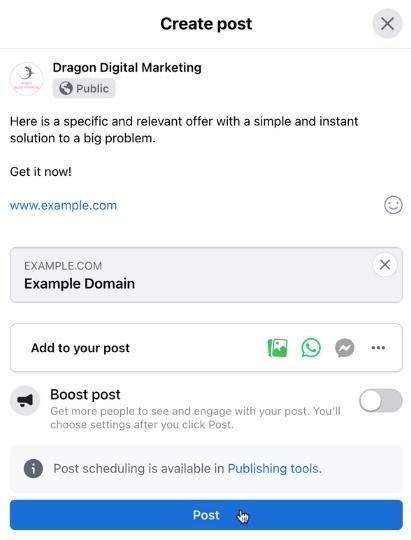
If you’re not happy with the limited organic reach on Facebook and want to get more impressions, lead generation Facebook is easy with Facebook Lead Ads.
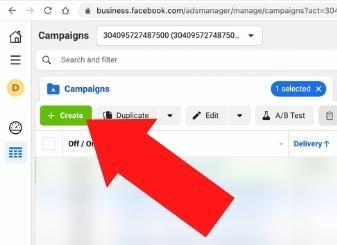
Facebook Lead Ads makes it simple to generate qualified leads for your small business. You can customize your lead generation ads on facebook to meet marketing objectives for the entire customer lifecycle.
You can integrate Facebook Lead Ads with ActiveCampaign. With Zapier, you can capture leads from Facebook Lead Ads and add them as contacts to your ActiveCampaign account. With ActiveCampaign and Facebook Lead Ads, you can automate the creation of new contacts or update an existing contact. You also can add new leads to an ActiveCampaign automation.
Lead Generation Through YouTube
YouTube is a great tool to use for generating leads. This platform is the second largest search engine and one of the most visited websites in the world. You can get leads from YouTube by optimizing your YouTube channel and YouTube videos, or by advertising on others’ videos.
Let’s first have a look at organic lead generation through YouTube:
- Focus on SEO
YouTube is a search engine and YouTube SEO is similar to Google SEO. Make a list of important keywords you can rank for, make a dedicated video for each keyword using the keyword in the video title, add a detailed description to your YouTube video that includes a variety of supporting keywords, and use transcripts and captions. - Think about user intent before creating a video
Every YouTube video you make to promote your small business should start with research about user intent. What is a user searching for that keyword on YouTube looking for? To determine a good video length for a topic, consider watch time, and do your best to help viewers reach their end goal with the information you share in your video. - Use YouTube cards
YouTube cards allow video creators to share clickable links throughout the video. YouTube lets you add up to five cards for each video when you verify your website. This is a great way to drive traffic to your lead generation website. Link out to related lead magnets and content pages in your videos with strong calls-to-action to get leads. - Use playlists
Playlists are a great way to create a collection of related videos about a topic. When you group your videos together in playlists you can increase the session watch time and thus your chances to persuade a viewer to become a lead for your small business. - Partner with influencers
Influencer marketing is a great way to get exposure and generate leads for your small business.
Yet another method to generate businesses from YouTube is by leveraging their ad platform. YouTube ads can help you to get your videos in front of more eyeballs by promoting your content. YouTube ads can also help viewers of other people’s videos who are in your target audience become aware of your offers and become leads for your small business.
To get started with advertising on YouTube, you need a Google Ads account, a YouTube channel, and video to use to set up your campaign with. Using the link above, you can get started creating a YouTube for lead generation by selecting “Drive video views and traffic to a website”. Then, paste in the YouTube video URL you want to use for your video ad creative, the URL of the landing page on your lead generation website, and optionally add a button. Keep on following the instructions to publish your ad. For more control over the details of your ad campaign setup, we recommend to ‘switch to Expert Mode’.
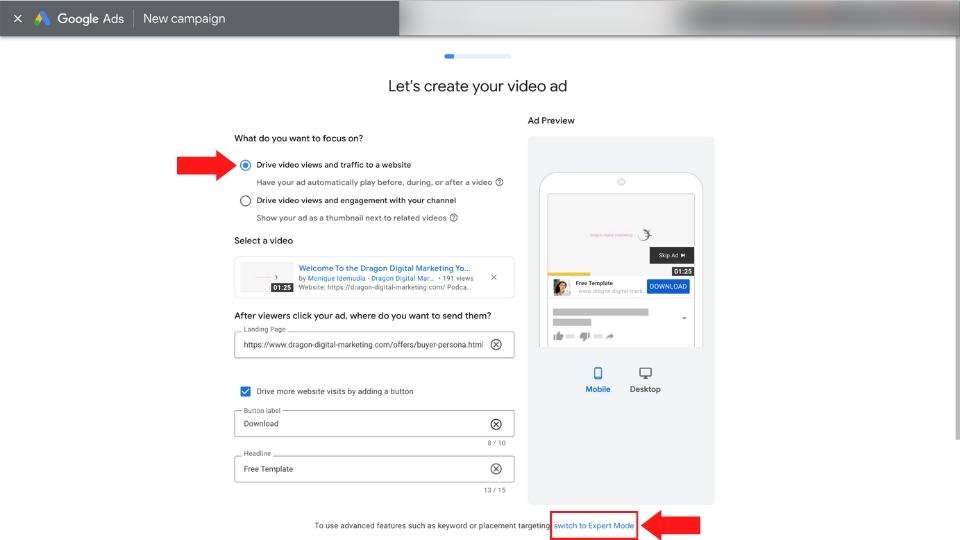
You can integrate YouTube with ActiveCampaign. ActiveCampaign is the #1 platform for small businesses and gives you the email marketing, marketing automation, and CRM tools you need to create incredible customer experiences. It allows you to embed screenshot links to videos in your email campaigns, auto-generate a campaign every time you post a new video to keep your fans hooked, embed YouTube videos on your landing pages, and more.
Lead Generation On Instagram
In this section, we’ll share both organic and paid methods to generate leads on Instagram. Choose the methods that best suit your target audience and your marketing budget.
Here are the top 5 Instagram lead generation tactics that are organic and free:- Craft a perfect Instagram bio
Your bio on Instagram should be an elevator pitch, which helps you make Potential customers use your profile bio to judge your authority and credibility, and should be able to get in touch with you following the link in your bio. To make the best use of this powerful tool: use your brand name, have a recognizable profile picture, select the best category, write a relevant description with a call-to-action, and use of hashtags. - Add a call-to-action button to your Instagram profile
In addition to the call-to-action in your bio, adding an action button to your profile makes it easier for your potential customers to take the first step. There are different options to choose from that fit your type of business. To add an action button to your Instagram business profile, click “Edit Profile,” then scroll down and select “Action buttons,” and follow the instructions.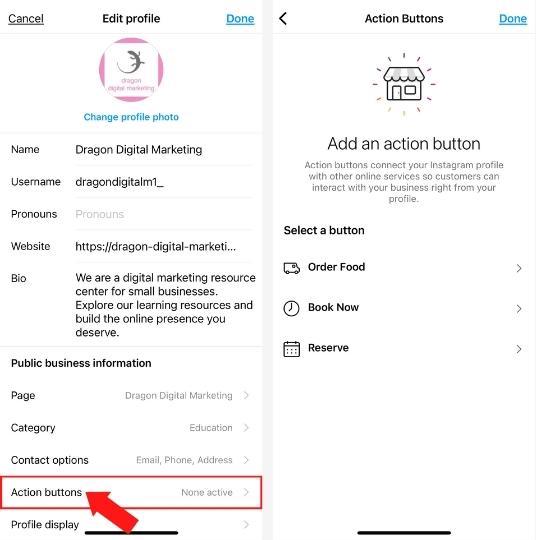
- Add links to your Instagram story
You’ll only find this feature in your Instagram settings when you have at least 10,000 followers and a verified account. If available to you, adding links to your stories on Instagram is an awesome lead generation technique because users can visit your lead generation website and any landing page you want right from your stories. - Actively create engaging content
Whether it’s stories, reels, or feed posts, actively creating content that engages helps you with lead generation. To increase your engagement via stories, you can create polls, quizzes, and ask your followers’ opinions. To increase the engagement from posts, add a call-to-action to click the link in your bio in your post descriptions. - Cooperate with authoritative influencers
Influencer marketing is an excellent technique to bring in lots of interested leads to your small business. Research and find out the most authoritative bloggers and influencers in your field with their audience matching your buyer persona, and reach out to them offering a cooperation on mutually beneficial terms.
You can integrate Instagram with ActiveCampaign. With ActiveCampaign and Instagram, you can send triggers to automatically publish posts. Or you set up an automated workflow to update contacts, add new deal notes, or tag a contact.
Creating ads on Instagram requires you to have an Instagram business account and a Facebook profile, since all the Instagram ads are created on Facebook Ads Manager.
To create an Instagram lead generation ad, go to the Facebook Ads Manager and click “Create”. Make sure you choose lead generation as your objective. Then, you need to design your ad, define your target audience, decide upon the duration and budget, etc.
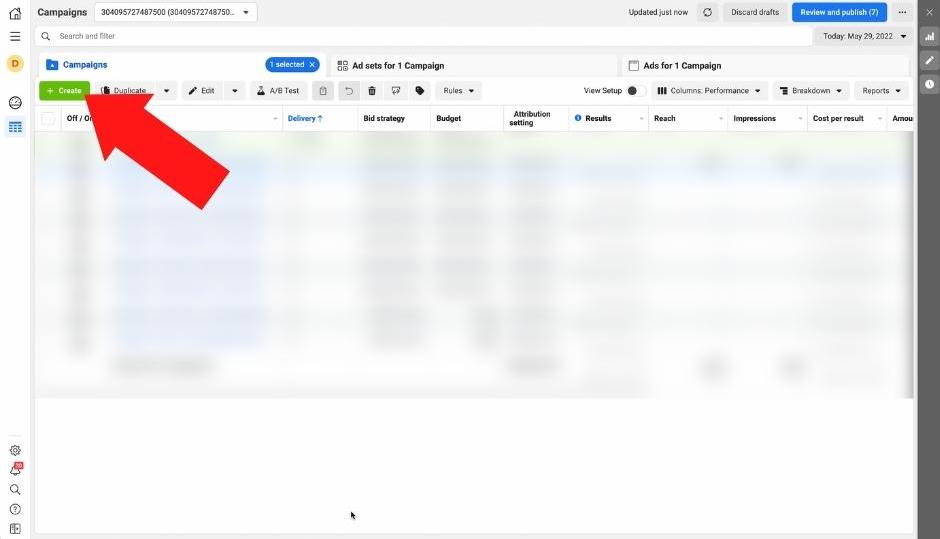
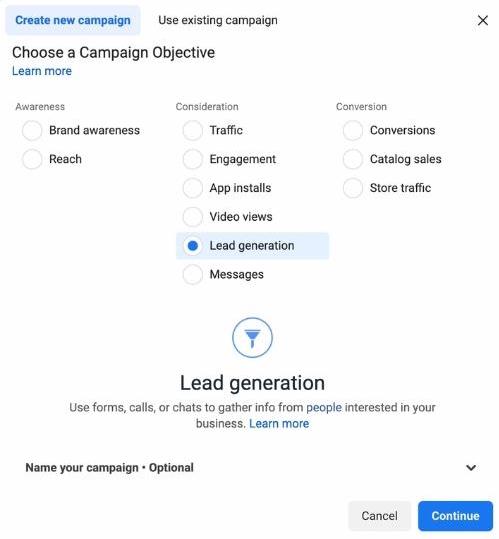
You can integrate Instagram Lead Ads with ActiveCampaign. Instagram lead ads make signing up for business information easy. Connect Instagram lead ads with ActiveCampaign to create or update contacts when they convert on your leads. Retarget contacts that engage with your ads, and add them to specific email automations. Tag contacts coming from Instagram and send them relevant, personalized emails. Nurture leads from Instagram and encourage them to become customers through marketing automation. Target and retarget leads on multiple channels. Track and optimize your ad spend.
Twitter Lead Generation
Twitter has evolved as a business platform. With Twitter Business, you can optimize the presence of your small business and your brand, how users subscribe to your email list, and virtually every facet of how you engage with your audience on Twitter.
Some of the best organic ways to generate leads on Twitter are to:
- Share Tweets that promote your lead magnets and your content with a link to your lead generation website to learn more.
- Put a call-to-action button on your profile asking users to subscribe to your emails.
- Use your bio to evoke an interest in your business with a call-to-action to click the link to your lead generation website.
- Use hashtags and keywords strategically in your username, bio, and Tweets to make your small business easily found.
And of course there is the option to run ads on Twitter with Twitter Lead Generation Cards, and website traffic campaigns. Website traffic campaigns are optimized to drive traffic and generate conversions on your website from Tweets targeted to specific audiences. This campaign objective was previously known as the website clicks campaign objective.
Check out this guide by Twitter to get started with Twitter Ads. And for small business marketing strategies and tips on Twitter in general, Twitter offers amazing, free downloadable guides and webinars, planners and marketing calendars, and more. You can access the Twitter small business resources here.
You can integrate Twitter with ActiveCampaign. Integrating Twitter with ActiveCampaign will allow you to connect your campaigns between both applications. Auto-tweet your campaigns to your followers, keep tabs on follow activity, and keep your salesforce in the know with follow-specific updates.
Lead Generation Website Video
Lead Generation Website Infographic

I’ve Built A Lead Generation Website - Now What?
If you’ve built a lead generation website for your small business and reached your lead generation objectives, the next step is to learn how to successfully and efficiently manage your contacts. Lead generation and nurturing go hand in hand.
You need to learn how to predictably turn your leads into customers that generate sales in your small business. You need a lead generation nurturing process. You want to figure out exactly what to say, at the most opportune time, and craft highly-converting digital marketing campaigns to present to your leads.
How can you see everything you need to know about your contacts at a glance? In a small business CRM - contact relationship management system - like ActiveCampaign.
A good CRM software lets you segment your contacts, so you can manage them better. Segmentation is powerful. But how do you build segments, organize your contacts, and create an incredible customer experience? Contact management in ActiveCampaign is easy when you know where to start. This page shows you everything you need to know to get started with contact management.
Also, continue to tweak and improve your lead generation efforts and perform split tests to identify which lead generation tactics works best for your small business. Continuously measuring your success and seeking to improve ensures your lead generation website is staying updated and keeps on performing well for you.
Remember: Your lead generation website can only deliver the leads. It doesn't matter how many leads that website generates if your marketing and sales processes aren't equipped to handle those leads.
Make sure you have the sales and digital marketing strategy in place to ensure you can nurture and sell the leads your lead generation website is generating. Otherwise, you're generating leads no one will follow-up with, which means you're not growing.
Have a plan in place to handle inbound leads coming from your lead generation website and you will see significant results.
Conclusion
There are plenty of ways to transform your website into a lead generation website that does a great job at converting your website visitors to leads and customers of your small business.
Start Generating Leads For Your Small Business Today
Build a lead generation website with ActiveCampaign – the #1 automation platform – with form builder, landing pages, CRM, and more.
 Try ActiveCampaign Today For Free
Try ActiveCampaign Today For Free
